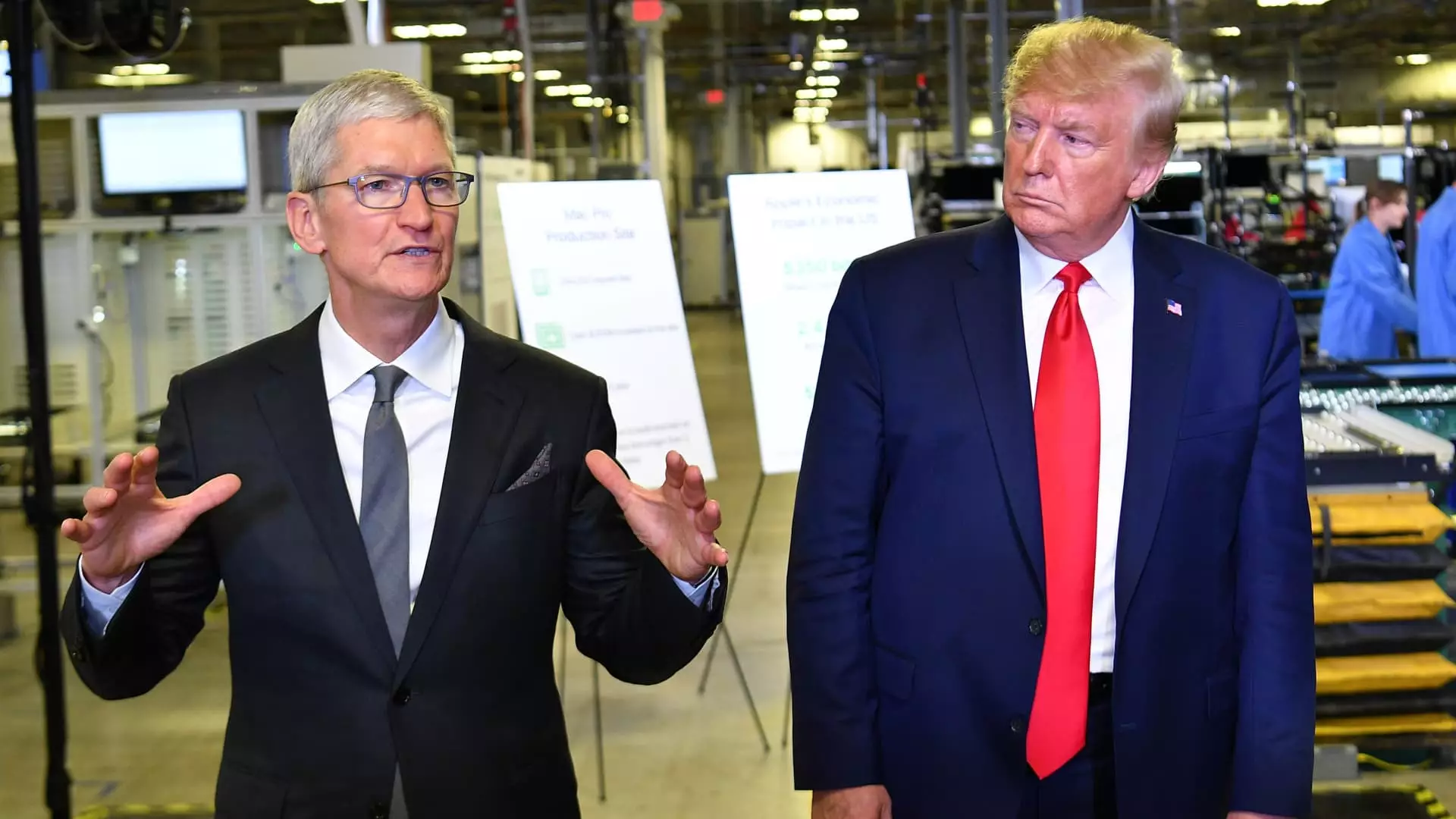In a startling proclamation on Truth Social, former President Donald Trump issued a stark warning to Apple, commanding the tech giant to shift its iPhone production to the United States or face a punitive tariff of 25%. This threat is not merely an economic maneuver; it is a fierce political statement that reflects a broader tension around globalization and American manufacturing. Trump’s post is a glaring reflection of his administration’s approach, where imposing tariffs has become a primary tactic in negotiations, entwining national pride with corporate duty. But what is the reality behind this rhetoric?
The immediate aftermath of Trump’s statement was predictably dramatic, with Apple shares dipping by roughly 2%. This ripple effect demonstrates just how intertwined the company’s fortunes are with perceived threats from influential figures. While Apple’s flagship iPhones currently roll off assembly lines in China, the company has been diversifying its manufacturing capabilities, notably by building a foothold in India, a nation with evolving trade relations with the U.S. However, this strategic move has not appeased Trump, whose demands threaten not only corporate strategies but broader economic implications.
The Uncertainty of Costs and Consumer Impact
Transforming iPhone production to the U.S. might appear to be a patriotic move on the surface, yet it belies a complicated reality involving increased costs and potential repercussions for consumers. Analysts predict that producing iPhones domestically could elevate their retail price by an astonishing 250%. Currently priced around $1,000, the iPhone 16 Pro could skyrocket to over $3,500. The fear here isn’t just a hit to profit margins but a broader consequence of alienating well-established consumers who might balk at steep prices during a time when economic uncertainty looms large.
This convoluted chain of events raises the question: Is the goal of protecting domestic manufacturing truly aligned with American interests? Or is it merely a populist tactic to energize a political base? The underlying assumption that a tariff will compel companies like Apple to root themselves in American soil misunderstands the fundamental consumer behavior that drives modern economics. Higher prices could lead to decreased market share, potentially shifting production overseas once again—a cycle that echoes the very problems Trump claims to remedy.
Apple’s Gamble in a Global Landscape
One could argue that Apple is not without fault in this equation. The company has publicly stated its commitment to U.S. development, pledging a $500 billion investment, primarily focusing on artificial intelligence and server production. Yet, these glamorized announcements often lack substance, especially when it comes to fundamental manufacturing capabilities. Meanwhile, major assembly partners like Foxconn are actively sinking hefty investments into Indian facilities, showing that Apple is hedging its bets on a diversified strategy and, unfortunately, not on U.S. soil.
The tangential nature of this tariff threat puts Apple in an increasingly precarious position. It finds itself grappling with declining demand in China while simultaneously facing political scrutiny back home. As the market fluctuates and trade tensions resurface, the specter of tariffs looms ever larger over a tech behemoth already ensnared in the complexities of international trade.
Lessons from Previous Administration Tactics
This unfolding saga is not without historical precedent; Trump’s previous tenure notorious for weaponizing tariffs also exposed companies like Apple to fluctuating market conditions and uncertainty. In the face of a proposed 15% tariff on Chinese imports in 2019, Cook adeptly navigated a robust relationship with Trump, achieving favorable outcomes for Apple’s product lines. However, the landscape has dramatically shifted since then, and the current political climate appears far more contentious and unpredictable.
The strategic negotiation needed now is not merely one rooted in economic leverage but in a genuine understanding of how to balance American labor interests with the realities of a globalized economy. Tariff threats—which historically have yielded mixed results—should not be the first course of action for any administration concerned with fostering productive relationships in the technology sector.
In this charged atmosphere, Trump’s ultimatum serves as a poignant reminder: commerce exists not solely within the confines of national politics but within a vast web of global interconnections, where simplistic approaches can undermine complex systems. The question isn’t merely about where iPhones are made; it’s about what kind of future America wants in a rapidly evolving technological landscape.

Leave a Reply